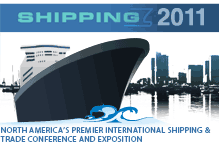
Pooling Containerships
Lloyds Chartering AS announced that it would establish the Lloyds Containership Pool (“LCP”) the first independent and open pool for containerships trading in the short-term period market. LCP will be targeting smaller and medium sized owners of containerships in the 1,000 to 3,000 TEU segment. LCP’s goal is to become a leading tonnage suppler to liner operators by offering market terms with a higher degree of flexibility. As a result of the pool structure, LCP can offer an alternative vessel in the same geographic region should an operator wish to upgrade or downgrade capacity of a current ship on charter.
Continue Reading
Following a Successful Strategy
Earlier this week, Seanergy Maritime Holdings announced that it had entered into a letter of intent with Maritime Capital Shipping (Holdings) Ltd (‘Holdings”) to acquire a 51% interest in Maritime Capital Shipping Limited (“MCS”), a company founded by Mark Harris formerly of Pacific Basin in 2006. The company operates a fleet of 9 handysize bulkcarriers, with an average age of ~10.7 years, that it employs on time and bareboat charterers with well-established operators. Holdings, a company controlled by the Restis family, will retain a 49% interest in MCS.
Continue Reading
Spring Housecleaning Continues
Last week NewLead Holdings sold three additional non-core vessels and agreed to purchase a 92,000 DWT Post-Panamax Bulker, being constructed in Korea for delivery in the 2Q 2011. While no price was indicated for the new vessel, the company did disclose that it had arranged a seven-year charter to a first class European at a floor rate of $15,000 per day with a 50-50 profit sharing when 110% of the BPI exceeds $17,000 per day. Assuming operating expenses of $5,500 per day and 360 revenue days, the charter will provide annual EBITDA of $3.2 million. As it has in the past, the company indicates that it will finance the acquisition with a combination of debt and cash on hand again giving credence to the existence of bank lending.
Continue Reading
Wall Street We Have a Problem
Like a phoenix arising from the ashes of U.S. Shipping Partners L.P., American Petroleum Tankers Holding LLC (“APT”) has come to the market offering $275 million First Priority Senior Secured Notes due in 2015. The company’s equity sponsors, Blackstone (75%) and Cerberus (25%) intend to use the proceeds of the offering to escrow $169.9 million for the construction and acquisition of the last two of five 49,000 DWT product tankers ordered at NASSCO, the M/T Empire State and M/T Evergreen State, to refinance the existing senior secured loan facility of $96.6 million and pay $8.5 million in transaction fees and expenses. The notes are rated B1 and B+, highly speculative, by Moody’s and S&P respectively.
The company’s fleet of five product carriers is the youngest in the Jones Act Fleet. The first three vessels, Golden State, Pelican State and Sunshine State, are chartered to major oil companies, BP, Marathon and Chevron respectively with the last two to be delivered upon completion to the Military Sealift Command (“MSC”). The charter terms vary with the Golden State and Pelican State on 7-year and 3-year charters respectively. The Sunshine State is on a 9-month charter and, as is typical with the MSC, the last two vessels are on 1-year charters with annual options to avoid a full five-year commitment. The five-year tenor of the notes likely reflects the charter profile.
Continue Reading
Another Dropdown Coming?
Last Thursday as we reported Navios Maritime Partners announced the follow-on offering of a further 4.5 million common units with a green shoe of 675 thousand units. On the following day the transaction was priced at $17.84 per unit a 5.26% discount from Thursday’s closing price of $18.83. Proceeds from the offering will be used to fund its fleet expansion and for general partnership purposes. Greater detail is shown in our Guts of the Deal below.
Continue Reading
Alterna Capital Partners and Western Bulk form JV
Connecticut based private equity firm Alterna Capital Partners continues the slow but increasingly steady entrance into shipping of private equity with a joint venture with handy and supramax bulk specialists Western Bulk. AMA Capital’s Rolf Wikborg is on the board of Western Bulk. Alterna’s shipping expertise is supported by well known ship finance professional Steve Serepca. Alterna’s Managing Partner, Jim Furnivall, expressed strong confidence that the marriage between Alterna’s capital and Western Bulk’s operating expertise would lead to “sustainable, long term success.”
The JV has already committed to two 58,000 dwt new buildings for delivery in March and November 2011.
Continue Reading
FINANCING JONES ACT VESSEL ASSETS
By H. Clayton Cook, Jr & Patrick E. Ogle, Seward & Kissel LLP
Editor’s Note: In his Marine Money January 2003 article “Lease Financing for Vessels in the Coastwise Trades,” Mr. Cook examined the origins and status of the then non-citizen lease financing controversy. In his Marine Money July/August 2004 article “Why German K/G Funds Can Now Lease U.S. Flag Assets,” he reviewed standards imposed by the Coast Guard’s February 4, 2004 Final Regulations and predicted significant lease financing opportunities for qualified non-citizen financial institutions in the U.S. coastwise trades. In this article, Mr. Cook and Mr. Ogle review the history and use of the Maritime Administration Title XI loan guarantee and CCF tax deferral programs. They conclude that these programs can be used by non- citizen owner-lessors today to achieve significant reductions in vessel financing costs for projects in U.S. coastal waters.
BACKGROUND
In Europe and the United States, the past decade has seen increasing public attention to a set of traffic congestion, air quality and petroleum usage issues associated with truck and other motor vehicle traffic, and to the use of an alternative water transportation as mode. More recent attention has been given to the carbon footprint issues raised by expanding electrical generation needs, and to a variety of alternative energy sources that have included off-shore wind power generation.
The European Union and the United Kingdom have addressed their motor vehicle problems with the Motorways of the Sea and Marco Polo programs and similar water transportation alternatives. In Europe and the U.K., programs for offshore wind farm development have been adopted, targeting production that will meet 20 percent of on-shore electrical needs by 2020. And, offshore wind farms in operation confirm the progress made in meeting these objectives. However, in the U.S. these subjects remain as topics for discussion and debate.
A Walk in the Park
Chapter 1 – Wall Street
As Robert Fairchild gazed deep into the amber numbers on his Bloomberg terminal, staring in disbelief that something called the Baltic Freight Index could actually plunge 97% in just four weeks, the private equity fund manager saw what appeared to be another historic opportunity. It was a vision that he had often during his ten years running money on behalf of pension funds and endowments; participating in both the inflation and deflation of the dot.com bubble, playing the housing market boom or bust with panache and loading up on commodities before they soared in value and dumping them before they peaked. This would be another walk in the park for his investors, he thought as his eyes locked on the graph – a slope steeper than any he had ever traversed during his vacations in Aspen, Colorado – and nothing brought him greater pleasure than making his investors money.
Continue Reading
Kicking the Can and Picking Pockets
By Richard Lemanski
After the dramatic fall in freight and time charter rates (in some sectors by 90%) and asset values (often by 50% to 67%) in late 2008 and early 2009, coupled with the freezing of the traditional banking market for ship mortgages and the need for finance for the industry’s large newbuilding orderbook, many private equity firms and hedge funds were salivating with the perceived opportunity to acquire maritime assets and debt at substantial discounts in a distressed situations. Hedge funds had visions of the major shipping banks needing to write-down billions of dollars in their maritime loan portfolios and shedding loans at pennies on the dollar. By the second quarter of 2009, there were frequent trade press headlines of dozens of maritime-focused funds being set up to raise billions of dollars and earn 25% plus IRRs.
To date, the reality has not met the hype. While there have been a few shipping bankruptcies and restructurings and a few funds have acquired assets and loans, the deals done to date represent a small percentage of what was being touted a year ago.
The reasons for this are severalfold.
LOAN FACILITY AGREEMENTS – HOW WILL THEY EVOLVE DURING THE CURRENT CRISIS?
By John Forrester
It is reasonable to assume that, during the last 20 months or so, more shipping loan agreements have been scrutinised in greater detail than at any time in history. Banks, borrowers and their respective legal advisers have been poring over their loan agreements as they seek to protect their interests in the face of, first, the global banking crisis and, latterly, a severe shipping recession. So, how have loan agreements fared under the stresses of these times and what lessons can we learn for the future? How will loan agreements evolve in response to the crisis?
Shipping has of course been through many ups and downs in the past and loan agreements are designed to stand up to the various cycles that the industry experiences. But, to borrow an expression from the naval architects, have they been strong enough to stand up to the “hundred year wave” that has hit them in recent times?
Market disruption and bank default
The first major stress point of the current cycle was the interbank funding crisis that began in the last quarter of 2008. Readers won’t need reminding of the circumstances in which the interbank markets froze and banks were faced with greatly inflated funding costs. There was also the serious risk at that time of banks becoming insolvent or otherwise defaulting in their funding obligations (as lenders) or even their payment obligations (as facility agents).







